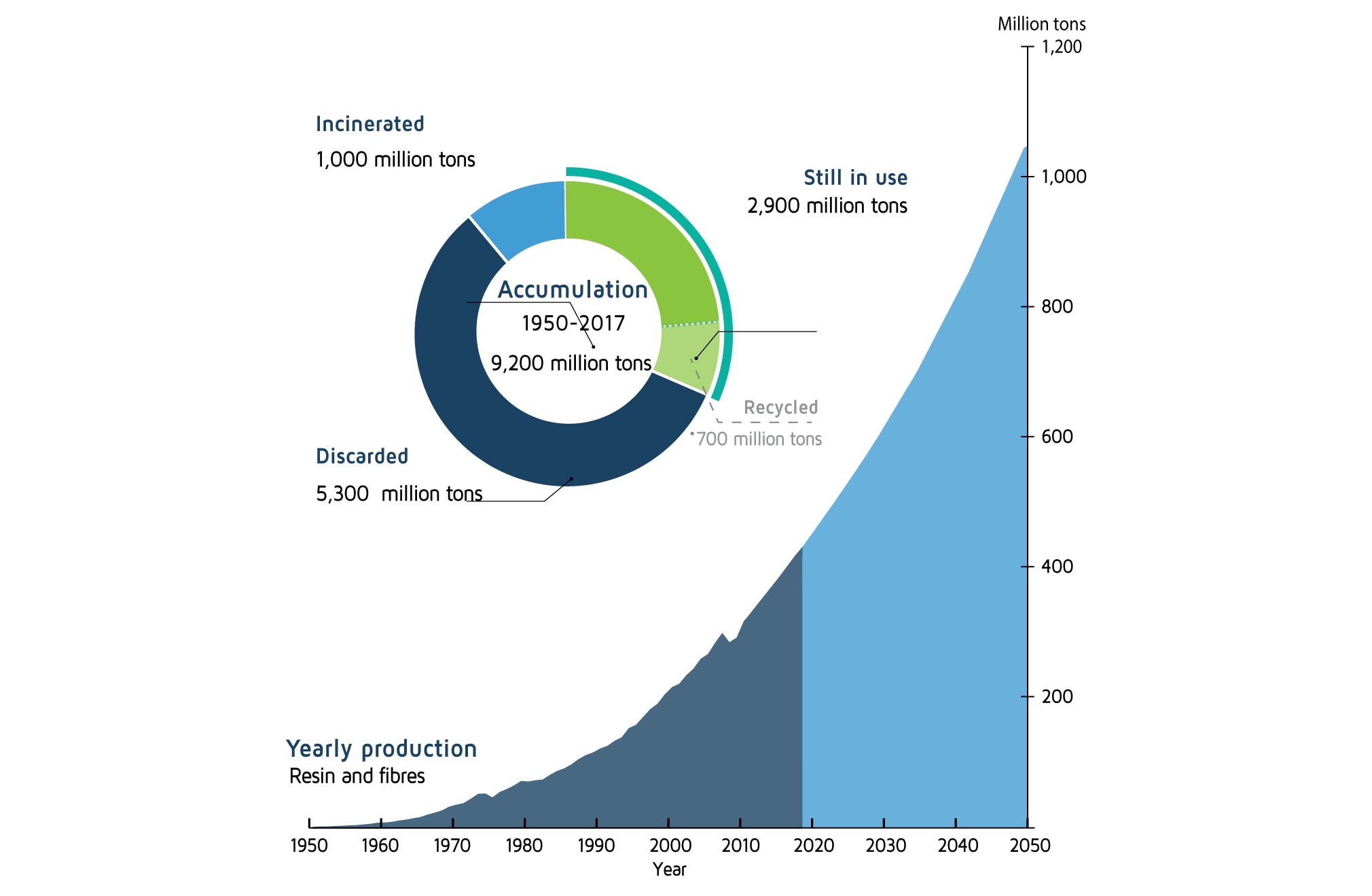The growing amount of waste released into the oceans is becoming increasingly alarming. According to the UN Environment Programme (UNEP), about 85% of this waste is plastic which causes damage to both humans and nature in many ways. If no action is taken, by 2040 the annual amount of plastic ending up in the world’s oceans will triple and will significantly impact the climate as it is the cause of huge amounts of CO2 emissions.
According to the report titled, “From Pollution to Solution: a global assessment of marine litter and plastic pollution”, each year humans release around 11 million metric tons of plastic into the oceans. The same report states that without urgent action being taken that this amount will triple by 2040, meaning that between 23 and 37 million metric tons of plastic will be released into the oceans annually.
Research reveals that currently there are around 15–51 trillion pieces of plastic in global waters. As for the financial risk, by 2040 plastic waste is estimated to represent US$100 billion in risks for companies that would have to bear the costs of waste management at the projected volumes.
Fig.1. Global plastic production, accumulation and future trends

At the same time, the coronavirus pandemic has had an impact on marine waste as well. For instance, it is estimated that Italy alone produced between 160,000 and 440,000 metric tons of additional waste in 2020 due to the increased reliance on medical protective equipment. Therefore, even if only 1% of single-use masks was inappropriately disposed of, over 10 million masks may be released into the ocean every month.
According to the Executive Director of UNEP, Inger Andersen, marine waste, and particularly plastic pollution is dangerous for many reasons.
“A major concern is the fate of breakdown products, such as microplastics and chemical additives, many of which are known to be toxic and hazardous to both human and wildlife health and ecosystems. The speed at which ocean plastic pollution is capturing public attention is encouraging. It is vital that we use this momentum to focus on the opportunities for a clean, healthy, and resilient ocean.”
Harmful impacts of marine debris
UNEP states that plastic never biodegrades but, instead, it breaks down into small pieces over time resulting in a significant negative impact for both nature and humans. As for the effect on marine life, this ranges from physical to chemical, harming individual animals and the biodiversity and ecosystem in general. Humans are at high risk too, as micro-plastics enter into the human body in many ways including through the air, food, and water, and through the skin. Microplastics have even been found in parts of the bodies of newborn babies.
Aside from this, the growing amount of marine waste has a significant impact on the climate. Over the past 40 years, plastic production worldwide has more than quadrupled. If no action is taken, by 2050 the level of greenhouse gas emissions from plastics will grow to 6.5 gigatonnes of carbon dioxide equivalent (GtCO2e) while for comparison, similar greenhouse gas emissions were 1.7 gigatonnes of CO2 equivalent in 2015. The International Union for Conservation of Nature (IUCN) explains that as plastic is a petroleum product if plastic remains are incinerated, carbon dioxide is therefore released into the atmosphere.

